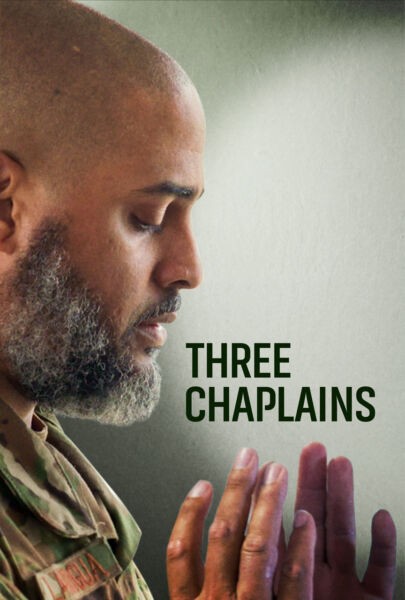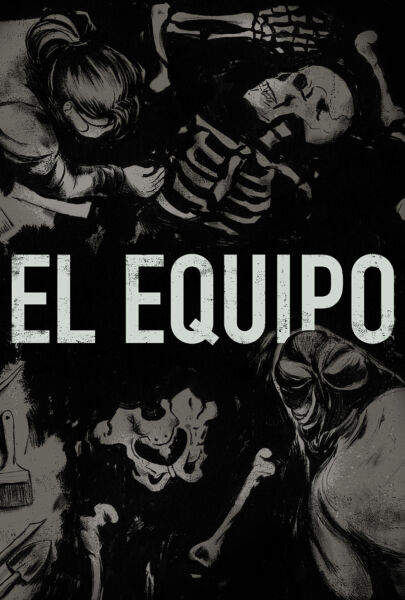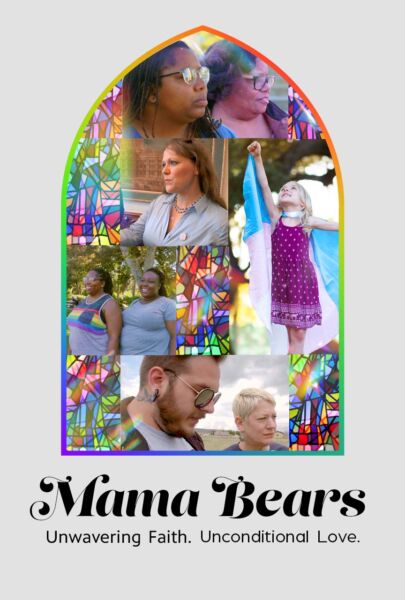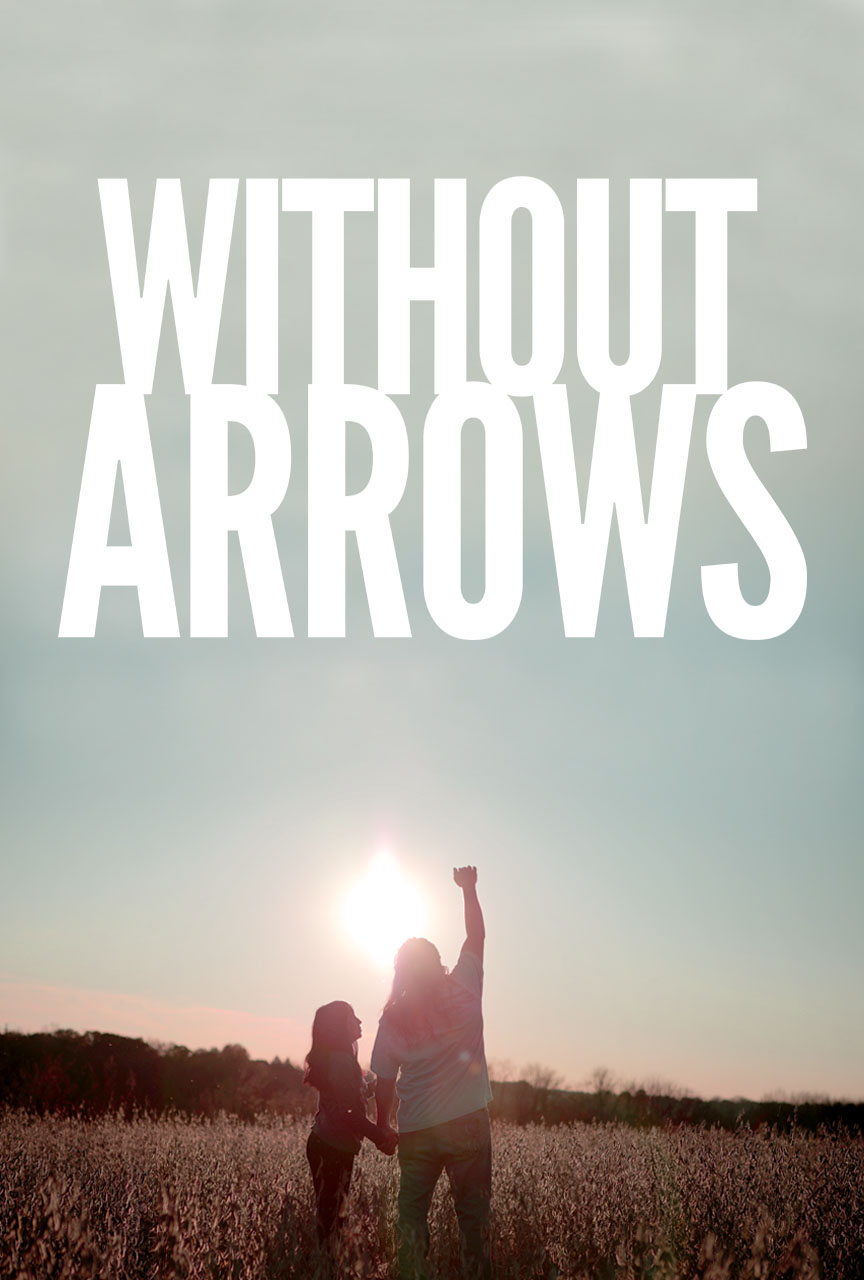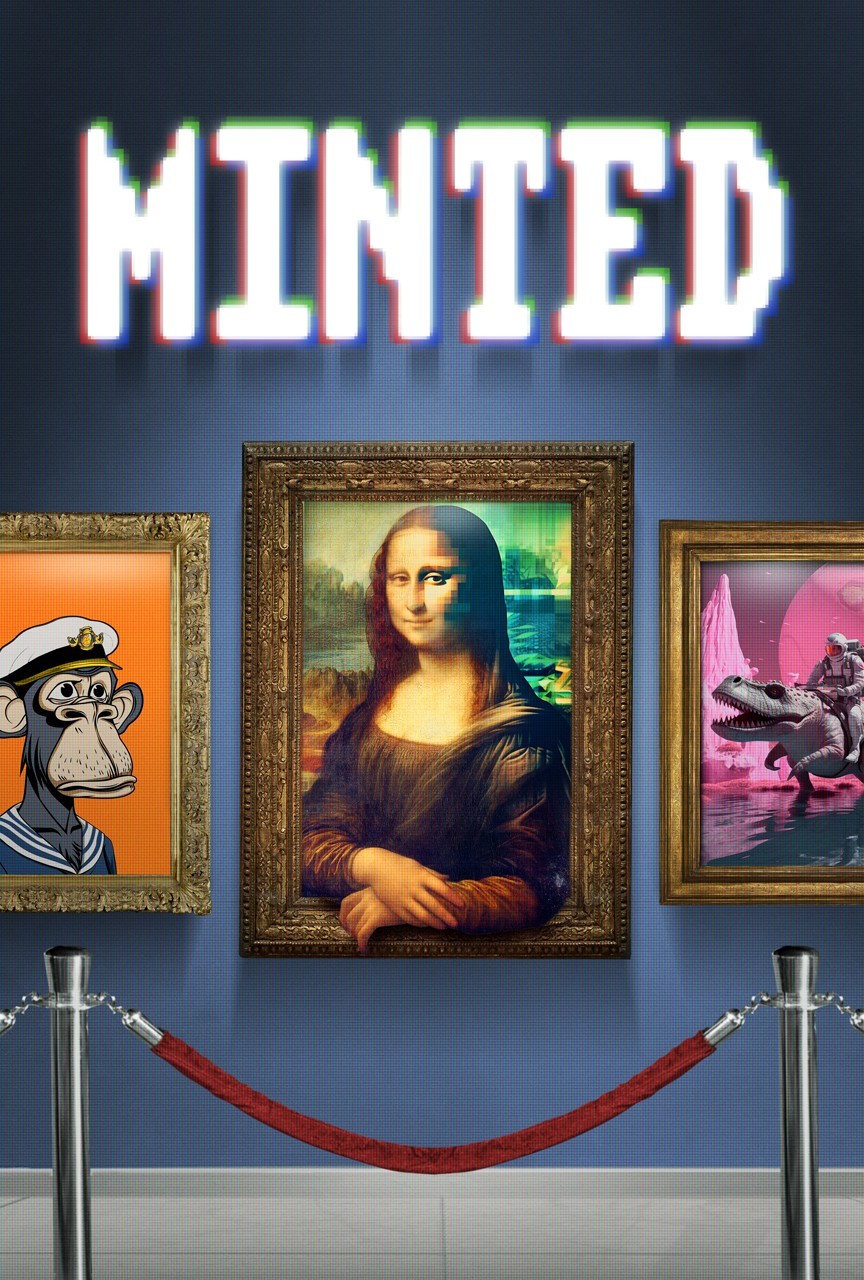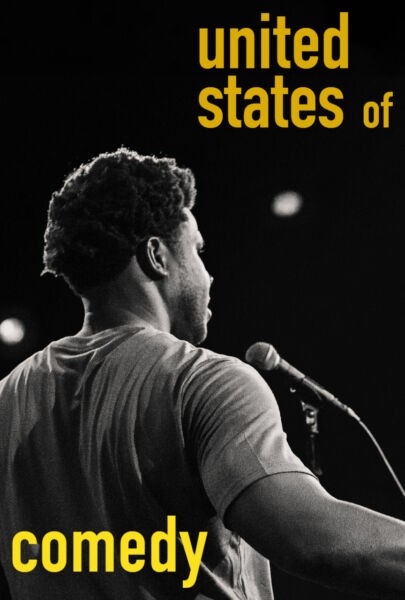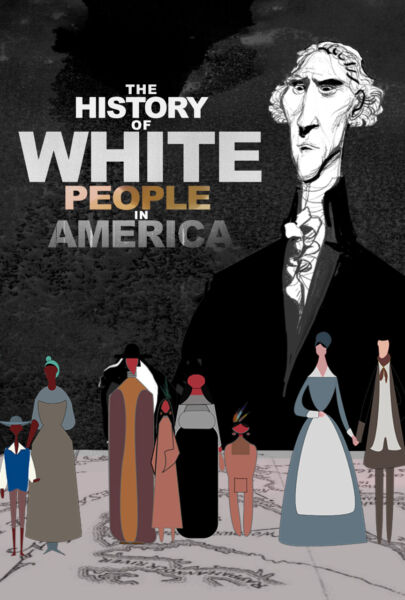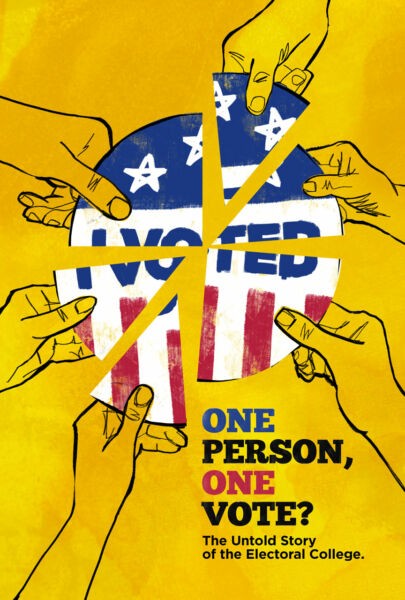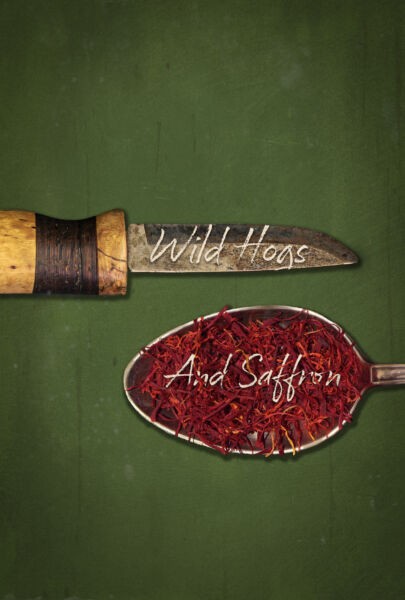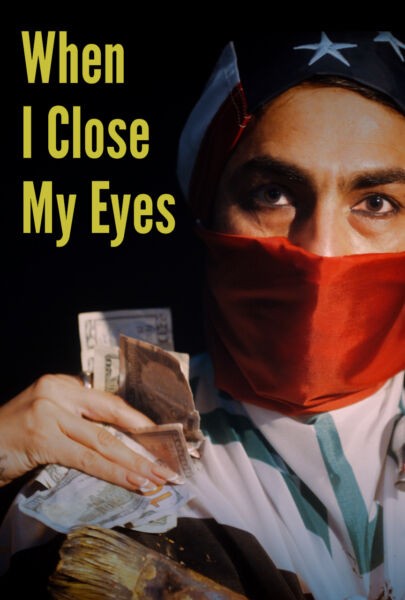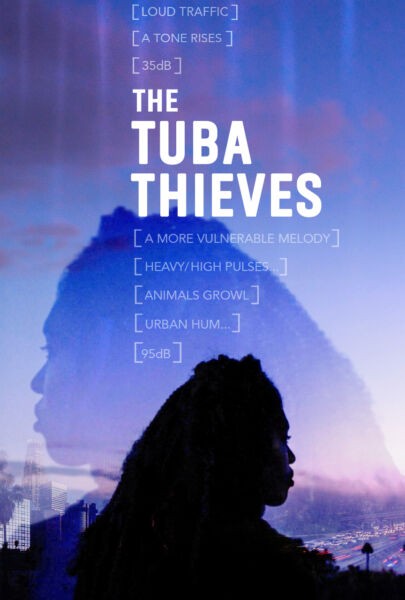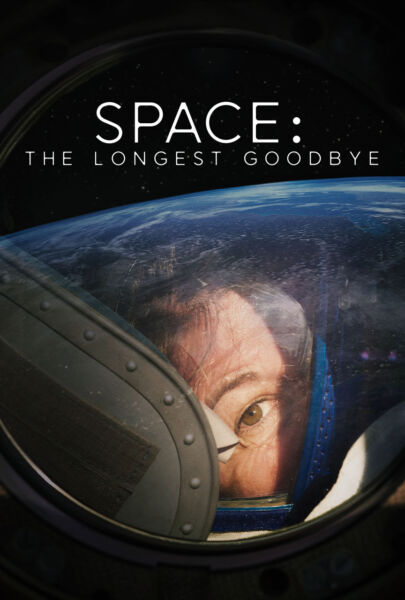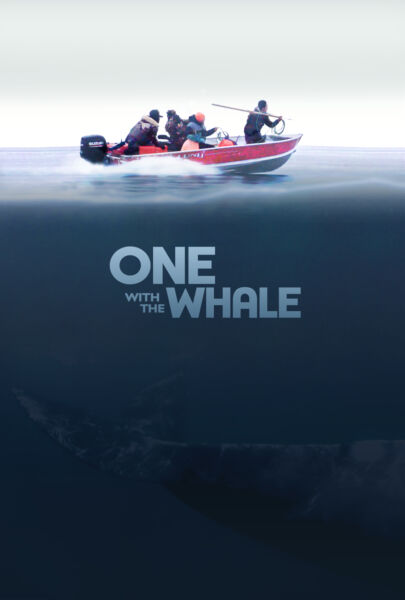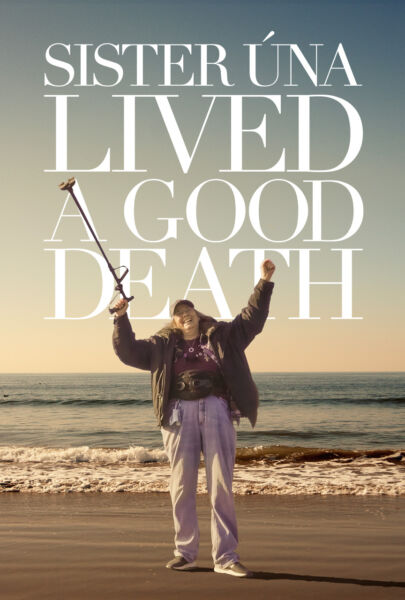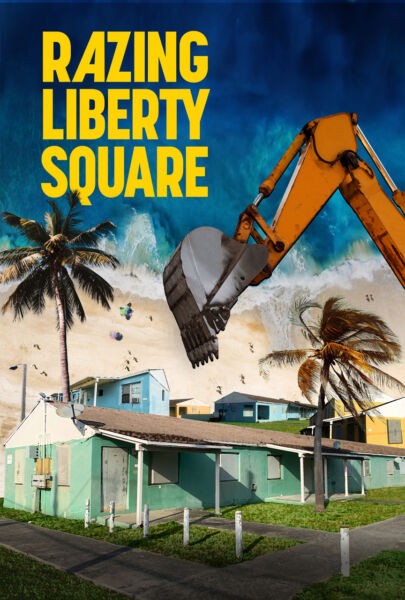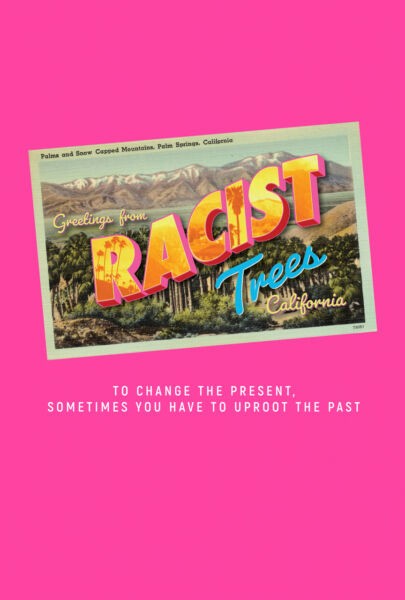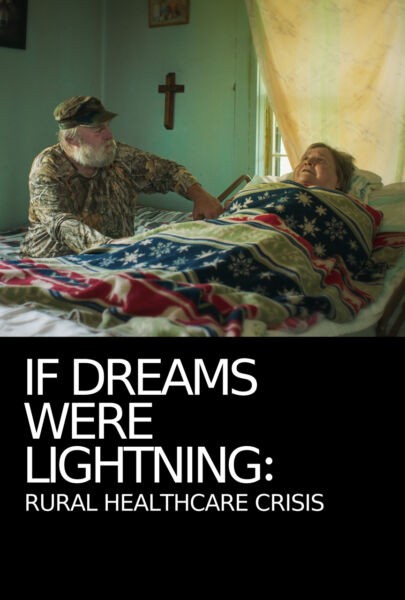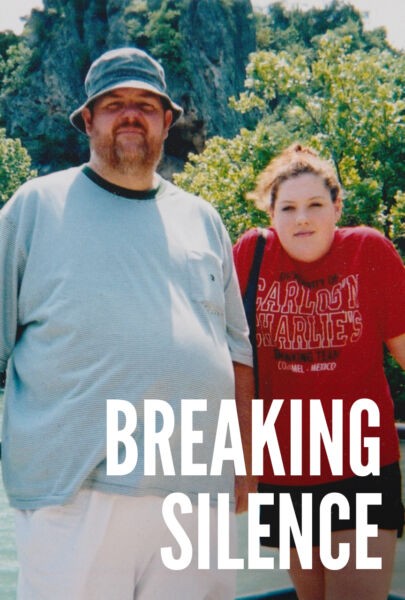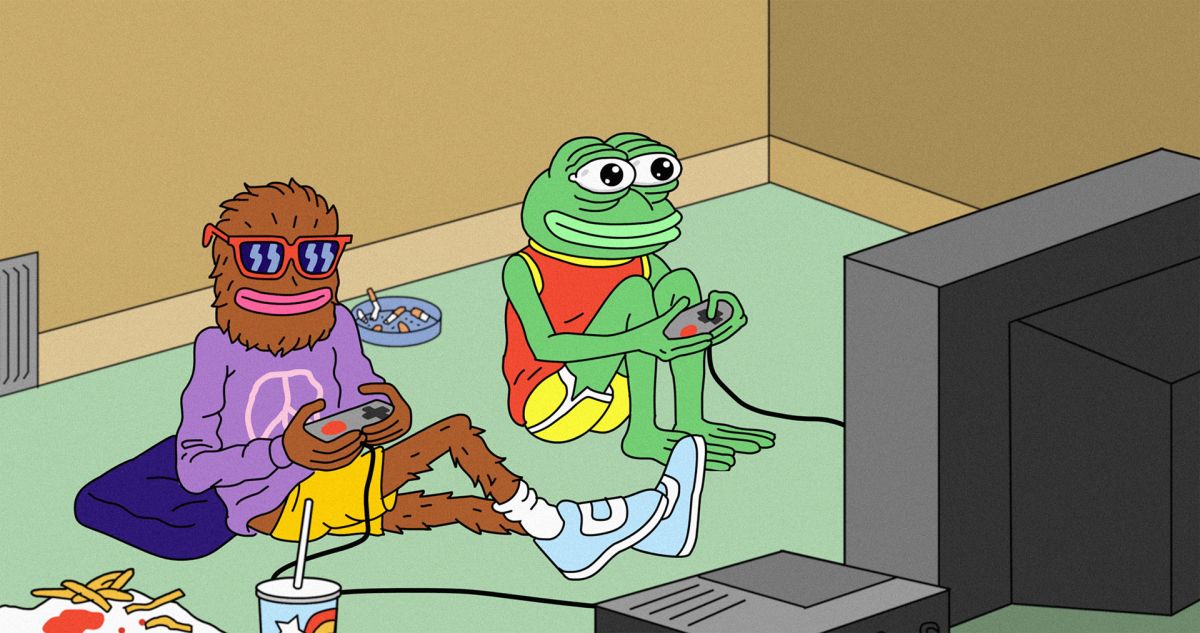
Filmmakers Arthur Jones and Giorgio Angelini both bring very unique artistic backgrounds to the drawing table that led to the fruitful collaboration for Feels Good Man, which is Jones’ feature film debut. Both are well-suited to tell the vivid tale of artist Matt Furie and his poor cartoon frog creation, Pepe, who went on a long strange, horrible trip far from his sanguine beginnings: Jones is a cartoonist who came up in the same indie comics scene as Furie and has had a successful career as an animator; Angelini was a successful architect (who also used to be in indie rock bands) who segued to film. Together they bring their kaleidoscopic visions into visualizing this film in a way that pops, and their artistic backgrounds also show in the empathy they have for Furie and his struggle to take back his frog.
Pepe’s surreal journey of being co-opted and twisted into an image of hate by extreme online communities through the eyes of his horrified creator, who finds himself increasingly powerless to stop this co-optation as it spirals out of his control.
The filmmakers use “Furie’s story, and some gorgeous animation, as a wonderfully succinct window into the way social media has changed the country,” wrote Joseph Bien-Kahn in the San Francisco Chronicle. Adds Matt Zoller Seitz on RogerEbert.com: “Feels Good Man is essentially a detective story, tracking the appropriation of an artist’s work for purposes that go against everything he’s about. Not content to string together talking head interviews, the movie uses art and animation to find a cinematic equivalent for Pepe’s evolution from a quirky cartoon animal into a weapon.”
The team talked to me about what led them to make a film about a hijacked cartoon frog, the use of animation, and where they think Pepe stands today.
[Answers from both unless specified.]
Why did you make Feels Good Man?
The opportunity presented itself to tell a truly strange and unique story that spoke to a much larger and fundamental issue facing America. In a moment where the internet seems to be influencing real life in ways no one really ever predicted—from the most trivial aspects of pop culture to the most profound issues in politics—the story of Pepe the Frog offers an extraordinarily cogent way to discuss an increasingly confounding moment in our history.
How did you get Matt to trust you in telling his (and Pepe’s) story?
Luckily, we were friends with Matt before making the film. But that said, it took a long time before we truly set into a rhythm. Part of making any doc film is about building trust with your counterparts throughout filming. Your subject is entrusting you to tell their story, and you have to honor that as much as possible, without losing sight of your own vision. Matt was an incredible collaborator and was thankfully very trusting of us from the get-go.
Since you did know Matt beforehand, what was your own experience with the evolution (and hijacking) of Pepe the Frog before you even started making the film? Did you have an “oh no” moment when you first saw Matt’s work used with different intentions?
GIORGIO: Arthur was a fan of Boy’s Club [Matt Furie’s comic where Pepe originated] from the early days and knew Matt as a friend before we started making the film. For my part, I was really more representative of the typical fan of Pepe. I really only knew him as an internet meme. So when Arthur began telling me about his idea for this documentary, and Matt’s experience, I was embarrassed that I had no clue about any of it.
What was the first meme you remember running across that made an impact on you (even if you didn’t know what a meme was then)?
GIORGIO: For me, it’s probably the entire suite of IMPACT font memes. Ones like the “One does not simply walk into Mordor” meme which was based on Lord of the Rings. It’s the first moment for me that you started to see memes morphing from passive jokes purely made for the lolz, to something being used as a tool for argumentation. That’s an important shift for internet memes transforming into tools for propaganda. Where the intent is sort of to embarrass the person on the receiving end of the meme.
And can you talk about the use of colorful animation to make Matt’s artwork come alive in the film? Why did you decide you wanted to have animation in the film and did you work together with Matt to make it?
When we talked about what the film could be, creatively speaking, in the early days of pre-production, it certainly was an early motivation to figure out how animation and motion graphics would play into the telling of this story. Especially given Arthur’s background in animations, the possibilities were endless. We were interested in telling the story, of course. But we were also very interested in how the multimedia aspects of the project could also be leveraged creatively to push forward the medium of documentary filmmaking.
Also, it was important to canonize Pepe. That is to say, Pepe was able to be co-opted largely because most people didn’t really understand who he was or where he came from. There are loads of alternative versions of famous cartoon characters that have long existed, pre-dating internet memes. Calvin peeing on a Ford logo. Or bootleg Bart Simpson t-shirts of him doing lewd stuff. There exists every derivation of racist and hateful memes of Spongebob Squarepants online. But in each instance, the general public sees those images and understands them to be bootleg knock-offs of the original.
Pepe didn’t have that luxury because Matt is just an independent comic artist. There’s no multi-million dollar publisher or corporation building Pepe’s brand or defending the copyright. So in that vacuum, the internet created its own narrative for Pepe.
So by bringing Boy’s Club to life on screen, what our hope is is that we sort of reverse-engineer the context and backstory and establish more formally the canon of Pepe. To make audiences feel for his transformation and feel for his loss like you would with any other cartoon character that you’ve grown to love.
Matt did help with storyboarding on a handful of animation sections. Like the segment where we see Pepe memes through history. Or the garbage world scene. A lot of our animations either came directly from his Boy’s Club artwork or were storyboarded by Matt.
Have you seen any backlash to the film or the film’s story so far from online communities that appropriated Pepe, or do you have any concerns about that?
GIORGIO: Honestly, it’s been pretty tame. There have been comments here or there from predictably crabby folks. But overwhelmingly the response has been one of love and support. And many of the extremely-online naysayers who thought the trailer was maybe too “normie” have come around to watch the film and begrudgingly admit the film is “fine.” So we’re pleased by that.
And alternatively, given some of the more recent positive uses of Pepe seen later in the film, what positive outcomes could you see coming from people seeing Feels Good Man? What sort of discussions would you like people to have after they watch?
GIORGIO: The DMs and emails we get are really great. For most people aware of Matt’s story and the life of Pepe, the film is something of a catharsis. A reaffirmation of reality. A reminder that the internet doesn’t have to be a place that shames us out of our compassion for others. People are constantly posting images of movie parties they’re hosting. Or notes of support for Matt. Or even sending us their own Peace Pepe’s. People are often surprised by how emotional they get by the end of the film. It’s all been quite a moving experience to hear the feedback.

What were some of the biggest challenges you faced in making this film?
Beyond the more typical hurdles most every indie filmmaker faces (finding money to make your project), getting the tone of the film right was probably the biggest challenge of making this film. The nature of the story forces you into some incredibly dark places. But it’s also often engaging in some of the most frivolous and humorous aspects of the internet as well. Managing those poles was a constant struggle. We knew this was an incredibly important story to tell, but we also wanted to be sure it felt like a cinematic experience, with villains and heroes and emotional journeys. Not just an information piece about the internet.
Was there any particular thing you had to cut from the film for time that you would love to share with people?
There were several incredible interviews we did that ultimately couldn’t be fit into our edit for a variety of reasons. But in particular, our conversation with famed graphic designer Steven Heller, was a great one. We discussed iconography and totalitarianism. And how it related to Pepe’s image and usage. We also spoke with an artist based in St. Petersburg who goes by the name ‘Pepelangelo. She makes large format knock-offs of famous pieces throughout time, all with a Pepe-aesthetic.
What’s your favorite moment in the film, or a scene that made the most impact on you?
The ending, for sure. For my part (Giorgio’s) I cry almost every time I see Matt talk about ‘hard-core happiness.’ Something about the pithiness of the statement, made at the end of this fantastical and absurdist journey that seems to have no end in sight. It hits you with the weight of a freight train. The idea that we all have to do our part to make this world a more beautiful place. And that we can’t wait for others to build that reality for us. We have to do it for ourselves.
Do you think of Pepe as still an “alt-right” symbol?
The truth is, it never really was. While it can sort of be read in jest, at the end of the film, our occultist interviewee, John Michael Greer, says that Pepe is an omen. And that “we must listen what he has to say.” We take those words quite seriously.
The truth is that Pepe, for whatever reason, really resonates with young people in a very meaningful way, all over the world. He vibrates at a particular frequency that comes to represent a uniquely modern existential strife young people around the world are experiencing. Young people who are seeing the rise of totalitarianism, wealth inequality, climate change, and an older generation who seems wholly content with promulgating these issues.
In that perceived powerlessness, Pepe’s image is a kind of icon, representing this alienation. What happened in 2016 in the United States was simply an isolated incident in a much larger, much more global experience for Pepe. Those alienated youth in America were preyed upon, as they always have been, by professional racists and opportunists who’ve always sought out disaffected, alienated young men to brainwash. It’s just that social media provides them now with a much more efficient recruiting tool. And Pepe operated as a uniquely advantageous siren call.
How have been your experiences promoting the film during this pandemic quarantine we’re all stuck in? Did you have any interesting revelations while promoting at virtual festivals?
GIORGIO: It’s a grind! Luckily, we’ve had some influential people who’ve come across the film and been nice enough to either post effusively about it or even offer more direct help. Like Ira Glass did for us last weekend for a virtual live screening and Q&A event he hosted (Tim Heidecker and Ann Friedman also participated). That’s made all the difference. It’s always difficult to put a film out on your own. Even harder during a pandemic. And even harder when the media landscape seems to be consolidating at warp speed. It’s just becoming nearly impossible to compete with it all. But slowly but surely, the story is getting out there.
What are your three favorite/most influential documentaries or feature films?
- People use the term floored all the time to describe their experience watching something particularly powerful. But for the first time in my life, we literally felt what it was to be floored by something. We literally could not get out of our seats when the credits ended. The weight of what we’d just witnessed sat on us like a ton of bricks. Time changed the game about what an advocacy documentary can be. While ostensibly it’s a film about prison reform, there are no seated interviews with experts or advocates talking about facts. It’s a purely emotional experience. Exploring the idea of what incarceration does to the human soul. That’s something no set of facts can ever do. It’s a truly special film, and sure to be an instant-classic.
- Fire at Sea really changed the game about the aesthetics of doc filmmaking. It’s incredible visual language, the setting, the scene setups, the pacing…These were all original ideas for the medium of doc filmmaking. And influenced greatly other phenomenal films like Honeyland.
- The Act of Killing is probably the film that demarcates the beginning of a new era in documentary filmmaking, an incredibly brave and powerful film that eviscerated people’s preconceived notions of what a documentary can and should be. It’s visually intoxicating, substantively infuriating, and emotionally wrecking. It reminded audiences and filmmakers that documentary filmmaking is art, first, and information, second.
What film/project(s) are you working on next?
Arthur and Giorgio are working on an animated series right now with a Los Angeles-based comedian, Craig Conant. Giorgio is writing a couple of scripts. One with novelist Omar El Akkad. And potentially beginning to film a documentary about human’s relationship to land, set in West Texas. Caryn Capotosto is producing two documentaries, both currently in production. One about the Unarian cult, directed by Jodi Wille. And another, called The Heist, about the theft of one of the most valuable artworks of the 20th century by Willem de Kooning, directed by Allison Otto. Aaron Wickenden has just completed editing the new Mickey Mouse feature documentary for Disney Plus, as well as Morgan Neville’s new project, a bio-doc on the late Anthony Bourdain.
How is Matt doing these days?
Matt is living tranquilly with his partner and his daughter, enjoying the outdoors. He has a new retrospective work coming out in October, published by Fantagraphics Books. Entitled Mind Viscosity.
?



